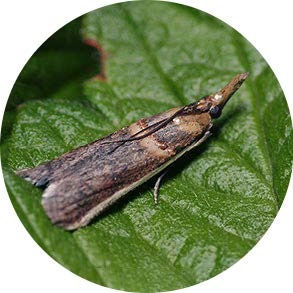


| Latin Name | Etiella zinckenella |
| Common Name | Pod borer moth |
| Biology | Adults are nocturnal, exhibiting phototaxis, and lay eggs on flower buds, petals, or young pods of Fabaceae plants. Larvae bore into pods and seeds, causing pod collapse and seed consumption, significantly reducing legume yields. This species completes 4–5 generations annually, overwintering as mature larvae spin cocoons in soil. |
| Damage | Primary hosts include cowpea, common bean, hyacinth bean, and soybean. |
| Distribution Regions | Tropical and Subtropical regions |
| Monitoring | Pheromone lures mimic natural sex pheromones to attract male insects into specialized traps for population monitoring and suppression. As a core IPM component, monitoring enables early risk detection and targeted control. Mass trapping reduces mating opportunities to curb offspring populations. Protocols: ●Use only with matched traps. ●15-45 traps/hectare,replace/replenish every 4-6 weeks. ●Wear gloves or wash hands with detergent when switching lure types. ●Refer to trap-specific hanging instructions. |
| Recommended Traps | Delta Trap, Wing Trap |

ご連絡先情報をご提供ください。精密にマッチしたフェロモンソリューションをご提供します。当社の既存ポートフォリオに最適なソリューションが見つからない場合、合成化学チームが分子構造設計から量産まで一貫してカスタム開発を実施いたします。